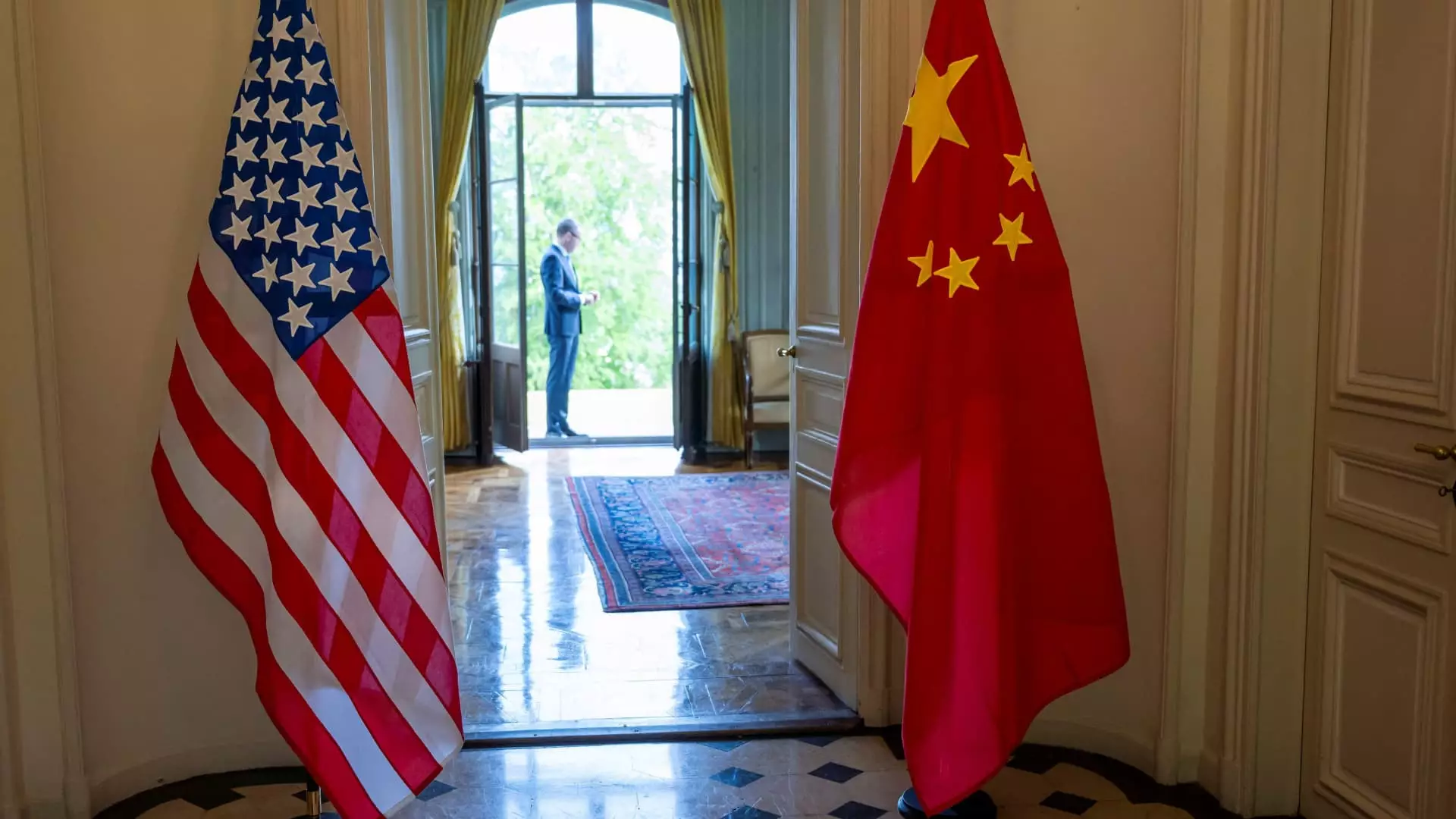In the intricate web of international trade, the relationship between the United States and China occupies a pivotal role. Recently, discussions aimed at de-escalating tensions between these two economic powerhouses reached a plateau, prompting U.S. Treasury Secretary Scott Bessent to signal the necessity for direct dialogues between the nation’s leaders. In his interview with Fox News, Bessent acknowledged the current stall in negotiations, emphasizing an impending need for more substantial discussions. This deadlock highlights a fundamental issue: without top-level intervention, complex problems surrounding trade and technology will likely fester and undermine global economic stability.
Bessent’s assertions came on the heels of a temporary resolution brokered during talks in Switzerland on May 12, which saw the two nations agreeing to suspend tariff increases that had surged past 100%. However, the fragile optimism from that agreement seems to be waning, as both sides continue to assert their positions rather than seeking compromise. This scenario presents a challenge not only for the leaders of the respective nations but also for the global economy, which is heavily intertwined with the health of U.S.-China trade relations.
The Necessity for High-Level Engagement
Analyzing the trade dynamics further, it becomes evident that the complexity of the issues at stake demands personal involvement from Presidents Donald Trump and Xi Jinping. Bessent has pointed out that resolving the tangled skein of economic disputes will likely require their personal touch, leveraging their established rapport. The effectiveness of this relationship will be put to the test, especially as both leaders prepare for another round of discussions, with Trump signaling a desire to re-engage with Xi.
However, any forthcoming dialogue hinges on the reassurance that there won’t be unexpected developments, particularly those emerging from the U.S. side, which could disrupt the negotiations. This expectation underscores the fragility of trust between the two nations and highlights the uncertainty that often accompanies their interactions. The atmosphere of apprehension is compounded by ongoing U.S. tech restrictions against China, which continue to fuel tensions.
China’s Stance: A Response to U.S. Pressures
China, on its end, has maintained a defiant posture amid these discussions. Chinese Ministry of Commerce spokesperson He Yongqian urged Washington to rectify what Beijing sees as erroneous actions. This impasse reveals a broader strategy on China’s part—preserving its sovereignty while navigating the treacherous waters of international diplomacy. In her comments, He articulated a desire for collaboration yet reaffirmed China’s intent to safeguard its own interests, particularly concerning chip export controls and the export of rare earth materials essential for modern technologies.
The refusal to ease export restrictions reflects a strategic calculus whereby China seeks to leverage its control over rare earth materials in response to U.S. pressures. Such a stance indicates that Beijing is prepared to engage diplomatically but will do so on its terms, as seen with its ambiguous responses regarding potential adjustments to its current restrictions.
The Role of Education in Trade Relations
In another significant development, the recent decisions by the U.S. to revoke visas for Chinese students signal a shift in the broader ideological battle between the two nations. This move, characterized by China’s Foreign Ministry spokesperson Mao Ning as “fully unjustified,” suggests increasing hostility that could have long-lasting implications for cultural and educational exchanges. Education has traditionally been a bridge in U.S.-China relations; however, weaponizing student visas could sour perceptions on both sides, undermining diplomatic routes that might foster future cooperation.
An environment characterized by mistrust and retaliation can inhibit the pathways necessary for healthy engagement. The educational landscape holds considerable potential in soft diplomacy; thus, the implications of policies on student exchanges cannot be understated. They serve not only as a reflection of current tensions but also as markers of future cooperation—should both sides choose to pivot towards a more constructive dialogue.
Looking Ahead: A Call for Diplomacy
The road ahead for U.S.-China relations requires collaborative policies and open channels of communication. As Bessent suggests, direct interactions between leaders present an opportunity to break the deadlock. However, both parties must also exercise caution and foster a climate conducive to trust. It remains to be seen if such an environment can be cultivated amidst the complexities and challenges that characterize today’s geopolitical landscape. The stakes are high, and the future of not only bilateral relations but also global economic stability hinges on its outcome.

